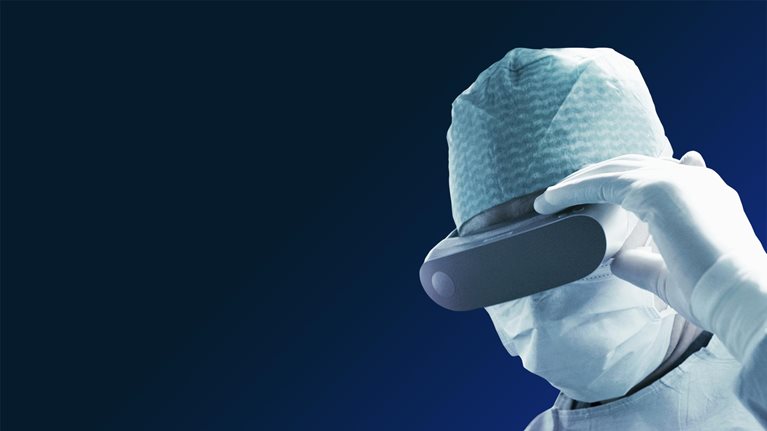At the beginning of 2020, HCA Healthcare CEO Sam Hazen read an article about an infectious disease evolving in China that grabbed his attention. He began discussing with his team whether HCA, one of the United States’ largest healthcare systems, had procedures and approaches ready if COVID-19 spread.
Hazen joined McKinsey’s Drew Ungerman to discuss the system’s response to the pandemic and how HCA maintained focus. An edited version of Hazen’s remarks follow.
The magnitude of the crisis
I think on March 13 was when it hit home for us, and it was “this is real. Let’s gear up.” Once we started to see the dynamics in Italy—and then as it spread quickly from Italy to Seattle and then to New York—it started to create a level of organizational angst.
We needed to start thinking: How do we deal with a scaled event, where all parts of HCA Healthcare—all 185 hospitals, all 2,000 outpatient facilities—will be impacted, possibly at the same time?
We started with the supply chain, making sure we had the personal protective equipment (PPE) we were going to need for the looming volume of cases. We had ample inventory for a reasonably sized surge of volumes, but not for some of the early countrywide forecasts we were seeing. It was important for us to shore up our supply chain—our capabilities, logistical management, control system, sourcing—as best we possibly could.
The second thing we needed to focus on—and this is really connected to supply chain—is the possibility that people would lose confidence. If our employees and our physicians felt like they couldn’t safely take care of people, then our whole system—and really the whole health system across the country—would crater. PPE in and of itself was the linchpin here.
Next, we needed to manage the demand for critical and specialty care. We figured out how to leverage the 42,000 beds, and 5,000 critical care beds, that we have across the country to create surge capacity and “pop-off valves” for capacity management. We did some practicing in our facilities in the early stages when volumes were really low. This allowed us to get some sense of how to move beds and equipment around and manage the patient population appropriately.
Making a big company feel small
Let me talk about how we tried to make the company feel small even though we’re big. We operate in 43 US markets and communities across the country in addition to the United Kingdom. And for the most part, we are in large, urban communities. We are, in my opinion, fundamental to the community infrastructure, just like first responders are, or like utilities are. Healthcare is a bit of infrastructure from one community to the other, and with that comes a sacred responsibility to be there when the community needs us.
We set two objectives early on, and everything else was put on the sidelines. The first was to protect our people. We were going to protect them when they deliver care, and we were going to protect them when they leave our institution. We were not going to lay them off or furlough them. And to this point, we have not laid off or furloughed a single HCA employee as a result of the pandemic.
One of the things we did that connected to the first objective was to create our own unemployment plan, the Pandemic Pay Program, which guaranteed up to 70 percent of employee pay. We recognized that we were going to have a lot of employees who weren’t going to get their normal hours, because we had no volume for a period of time, and we knew that was going to create pressure for our employees (eighty-plus percent of which are hourly).
I think we had over 114,000 employees who participated in our Pandemic Pay Program, and the company spent well over $150 million in supporting those employees.
The second objective was to protect the company so we could serve the communities in the future. It was critical that we focus on creating an ability to absorb whatever this was going to present to us financially.

The great acceleration in healthcare: Six trends to heed
Tech in healthcare and future partnerships
There are real opportunities for improving the healthcare system and the health of our communities over time. Investing in digital technology and increasing digital interactions with patients can create a better understanding of how each person interacts with the system. Telemedicine I think will be the starting point for that. In my mind, this has always been an opportunity. In any given day, we’ll take in 125,000 patients. Of those, 35,000 or so will be in our hospital beds as inpatients. We are constantly surveilling what’s going on with these patients. The opportunity for us is to set technology on top of that patient population and provide a safety net, if you will, of capability for the decision-maker, the physician, and the nurse, who’s providing the care—by constantly surveilling what’s going on with the patient. We are using that technology to influence the doctor’s clinical decision making or even the approach that he or she may use. We are supporting the nurse by constantly monitoring the patient and producing a potential output that suggests that this patient may be trending toward a challenge.
Let’s look at our patients with sepsis. If a patient gets sepsis in a hospital, it can lead to a really bad outcome for that individual. We monitor all of our patients at all times to make sure they don’t have indicators that could suggest a possible septic event. And by injecting the technology in the process, it allows us to inform the nurse that a patient is trending toward a possible bad outcome and say, “please investigate now.” That has reduced our mortality rates significantly.
In addition, as we’ve learned more and more about COVID-19, we’ve created a research apparatus in conjunction with others. We have a unique platform by having so many facilities across the country that is our “laboratory of learning.” We tap the “intellectual capital” and spread it across the organization quickly to try to eliminate variation and improve performance and outcomes.
I think we have opportunities to accelerate on that front by bringing others and attaching them to this unique platform. We have not been as intentional about strategic partnerships as I think we could (and should) be here. To create a better experience for the patient, this could be a technology partnership. It could be a payer partnership. It could be a vendor partnership. It could be an educational partnership, even a government partnership.
We believe these three areas of innovation—digital patient interactions with telemedicine, machine learning and surveillance, and strategic partnerships—can have significant value in the long run.
Leadership in a COVID-19 era
Our teams did an incredible job—Herculean work all around—taking cost out in a way that didn’t prevent us from being able to take care of our employees and patients. And I’m even more proud of the fact that we were able to honor the mission, protect the culture, and actually strengthen it in a way that I think is going to be helpful to us in the future.
Our business is very simple: it’s people taking care of people in need. If we can put systems and technology, best practices, and financial resources to work to help people deliver better care to others, that’s incredibly rewarding for me.
That’s what energizes me. And I’m more energized now than I was before the pandemic, simply because I see how HCA Healthcare as an enterprise can create capabilities to deliver better care and make our employees and caregivers more successful in what they do day in and day out.
It’s hard—when you have 285,000 employees—for them to feel connected to you. I hope I’ve created a connection and hopefully I can turn that into something that’s even more tangible and more valuable to them as individuals and to our company in the future.
We are in the people business. Even though it’s got science to it—institutional capabilities, facilities, and technology—it really boils down to our people.
Through it all, I think we’ve strengthened the culture of HCA Healthcare, and I’m hopeful that that strengthening will ultimately create even more value for us and our communities in the future. And that’s what I’m most proud of at the end of the day.
The views and opinions expressed are those of the interviewee and are not necessarily those of McKinsey & Company.

